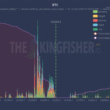Fusaka, Ethereum’s next protocol upgrade, aims to make rollups materially cheaper and faster by spreading the network’s data storage work more evenly across validators. The change comes with a coordinated reshuffling of public testnets: Holesky will be wound down two weeks after Fusaka is finalized later this year, while newer testnets take on the primary staging roles.
In practical terms, the upgrade reduces data availability bottlenecks that make rollup transactions costly. Rollups post calldata and proofs to Ethereum’s base layer; by better distributing who stores and serves that data, Fusaka should lower the per-transaction overhead for layer-2 protocols, improving throughput and gas efficiency for users and dapps.
Holesky — launched in 2023 as a large-scale proof-of-stake stress testbed — played a central role testing major upgrades such as Dencun and Pectra. But Holesky aged into a constrained environment: after Pectra activated in early 2025 the network experienced inactivity leaks (large numbers of validators going offline) that produced long exit queues and slowed validator lifecycle testing. For teams that need rapid iteration, that backlog made Holesky increasingly impractical.
To address those limitations, the ecosystem introduced new testnets. Hoodi, launched in March 2025, is a clean-slate environment built to replace Holesky for validator and staking-provider testing. Meanwhile, Sepolia remains the main playground for dapps and smart contracts, and Ephemery offers short, 28-day validator cycles for quick resets and faster feedback.
Client and infrastructure teams will stop supporting Holesky two weeks after Fusaka’s finalization, so validator operators and developer teams should migrate testing to Hoodi, Sepolia or Ephemery now. While Fusaka and the testnet reshuffle are targeted at improving performance rather than changing consensus rules, there are operational risks: testnet shutdowns can disrupt CI pipelines and validator tooling, and lingering testnet bugs have in the past led to long delays for operators.
Why readers should care: Fusaka’s changes could lower costs for layer‑2 users and make scaling rollups more sustainable — a meaningful step for Ethereum’s user experience and the broader DeFi/app ecosystem. Keep track of the Fusaka rollout and migrate your tests ahead of Holesky’s retirement.
Source: Ethereum Foundation Blog. Read the original coverage for full details.
